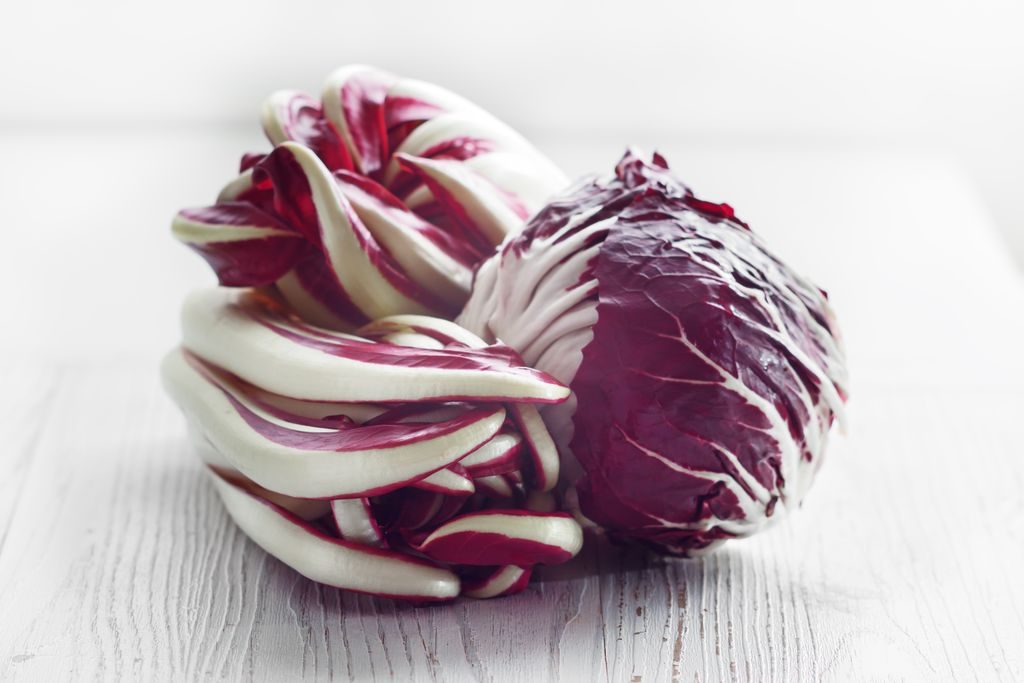Radicchio
Radicchio is a bitter and crunchy vegetable, with a purplish red color and an elongated or rounded shape according to the variety considered.

Radicchio is a vegetable belonging to the chicory family, typical of the Treviso area in Italy, from which it owes its name approved by the denomination PGI, Treviso red radicchio. There are several varieties, which differ slightly in shape and flavor, but the dark red color of the streaks of the leaves remains constant, as well as the bitter note that distinguishes it.
Variety of radicchio

Radicchio is divided into two main types:
- early radicchio;
- late radicchio.
The first is the most bitter, characterized by broad leaves, and its tufts are harvested in late summer, well before those of the late radicchio, whose seasonality is more distinctly autumn and winter. Both varieties are subjected to a process known as bleaching, necessary to achieve the right color and maturation, but the late radicchio is later picked and processed longer, so as to take on a bright color and, above all, a flavor. less bitter.
In the south of Veneto, however, the radicchio di Chioggia is cultivated, a particular cross between the late radicchio and the endive, which thanks to the selection made in the 1950s has taken on a rounded shape, while maintaining the purple color of the radicchio leaves red. It is a more bitter variety than the traditional one, and also more crunchy: this makes it ideal for cooking in the oven or in a pan while maintaining these properties, which instead tend to get lost in the case of long radicchio due to the significant loss of water which undergoes cooking.
Pairings and recipes with radicchio

Radicchio is widely used in local Treviso cuisine but it is the protagonist of several dishes that are also widespread in the rest of the Italian territory, especially in the North. Among the most common combinations there are those with speck, sausage or walnuts, while a very interesting bittersweet contrast is created when the radicchio is accompanied by pine nuts and raisins, gorgonzola or other dairy products (just think of the cream and bechamel which are combined with it for first courses such as pasta or lasagna).
The peculiar taste of radicchio makes the search for the right combination a compelling challenge: is it better to look for ingredients to sweeten it or to enhance its bitterness? In addition to choosing for their recipes tufts of late radicchio, sweeter than early radicchio, to soften the bitter taste you can cook together with onion or other sweet vegetables and use it for recipes such as penne with radicchio and cream, risotto with radicchio and speck or risotto with radicchio, walnuts and gorgonzola.
Finally, the radicchio lends itself well to cooking but also to be eaten raw as a side dish, as in the case of the crunchy salad of radicchio and oranges or of that radicchio, pears, walnuts and parmesan.
Nutritional values of radicchio
Radicchio has a low calorie content, about 23 calories per 100 grams, and is rich in vitamin A, vitamin B1, vitamin B2, calcium and iron, along with other antioxidant substances.
Thanks to the considerable presence of water and fiber, it is excellent for facilitating digestion: this is also due to the presence of bitter principles, the same used for the production of herbal teas and digestive liqueurs.




